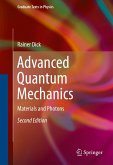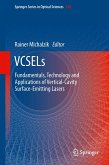This textbook, now in an expanded third edition, emphasizes the importance of advanced quantum mechanics for materials science and all experimental techniques which employ photon absorption, emission, or scattering. Important aspects of introductory quantum mechanics are covered in the first seven chapters to make the subject self-contained and accessible for a wide audience. Advanced Quantum Mechanics: Materials and Photons can therefore be used for advanced undergraduate courses and introductory graduate courses which are targeted towards students with diverse academic backgrounds from the Natural Sciences or Engineering. To enhance this inclusive aspect of making the subject as accessible as possible, introductions to Lagrangian mechanics and the covariant formulation of electrodynamics are provided in appendices.
This third edition includes 60 new exercises, new and improved illustrations, and new material on interpretations of quantum mechanics. Other special features include an introduction to Lagrangian field theory and an integrated discussion of transition amplitudes with discrete or continuous initial or final states. Once students have acquired an understanding of basic quantum mechanics and classical field theory, canonical field quantization is easy. Furthermore, the integrated discussion of transition amplitudes naturally leads to the notions of transition probabilities, decay rates, absorption cross sections and scattering cross sections, which are important for all experimental techniques that use photon probes.
This third edition includes 60 new exercises, new and improved illustrations, and new material on interpretations of quantum mechanics. Other special features include an introduction to Lagrangian field theory and an integrated discussion of transition amplitudes with discrete or continuous initial or final states. Once students have acquired an understanding of basic quantum mechanics and classical field theory, canonical field quantization is easy. Furthermore, the integrated discussion of transition amplitudes naturally leads to the notions of transition probabilities, decay rates, absorption cross sections and scattering cross sections, which are important for all experimental techniques that use photon probes.
Dieser Download kann aus rechtlichen Gründen nur mit Rechnungsadresse in A, B, BG, CY, CZ, D, DK, EW, E, FIN, F, GR, HR, H, IRL, I, LT, L, LR, M, NL, PL, P, R, S, SLO, SK ausgeliefert werden.
From the reviews:
"Book goes through quantum mechanics starting from its foundations, that are introduced along the historical development. It also includes recent topics ... that is necessary to understand quantum effects inside chemistry, material science, microelectronics and photonics. The style is always very didactic, mathematical tools are introduced in a very gradual way ... . Some chapters may constitute an initial course in quantum mechanics, the others cover a graduate course in advanced quantum mechanics and can also provide a very useful introduction to quantum field theory." (Bassano Vacchini, Zentralblatt MATH, Vol. 1247, 2012)
"Book goes through quantum mechanics starting from its foundations, that are introduced along the historical development. It also includes recent topics ... that is necessary to understand quantum effects inside chemistry, material science, microelectronics and photonics. The style is always very didactic, mathematical tools are introduced in a very gradual way ... . Some chapters may constitute an initial course in quantum mechanics, the others cover a graduate course in advanced quantum mechanics and can also provide a very useful introduction to quantum field theory." (Bassano Vacchini, Zentralblatt MATH, Vol. 1247, 2012)









